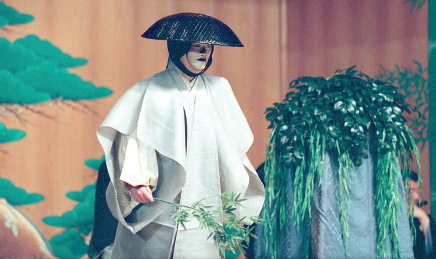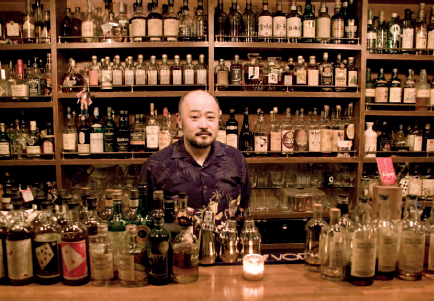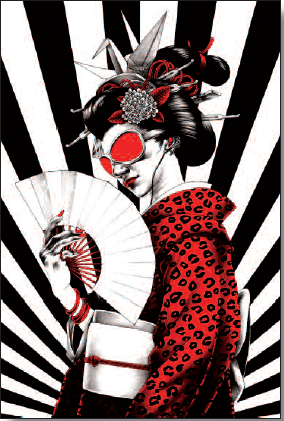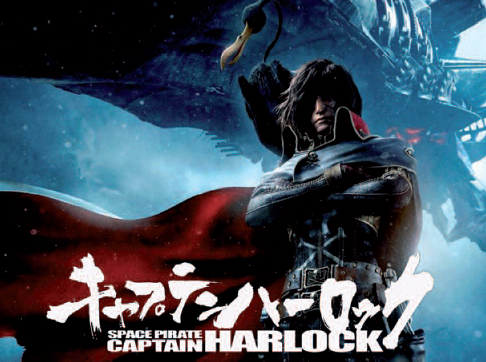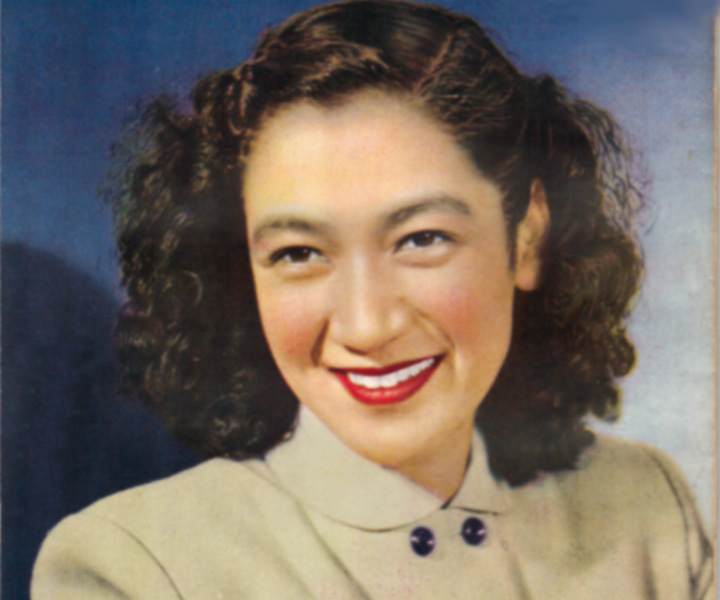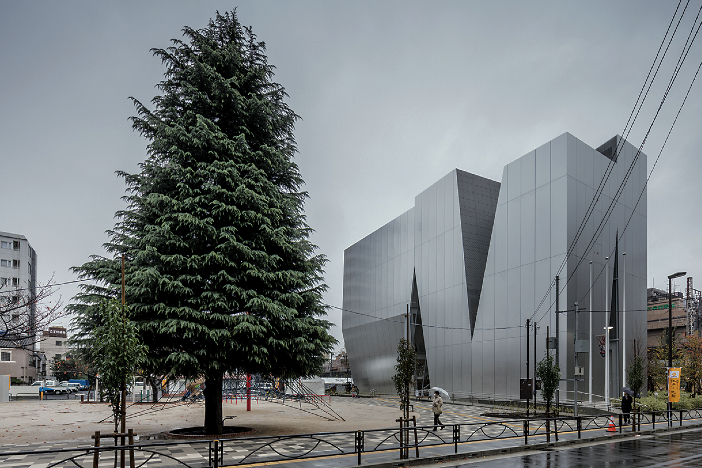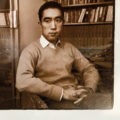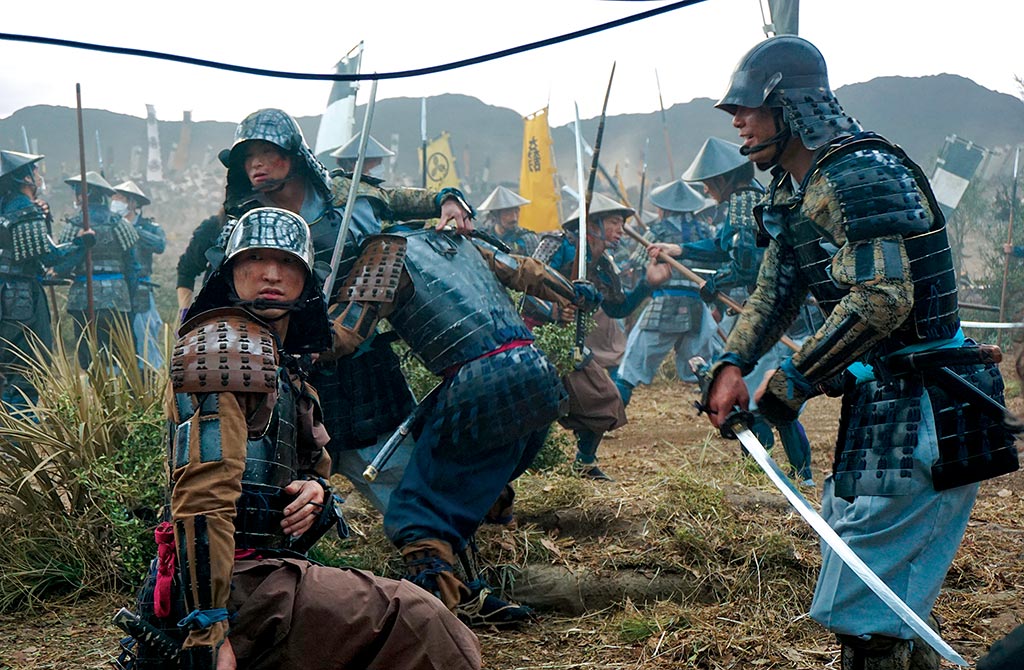
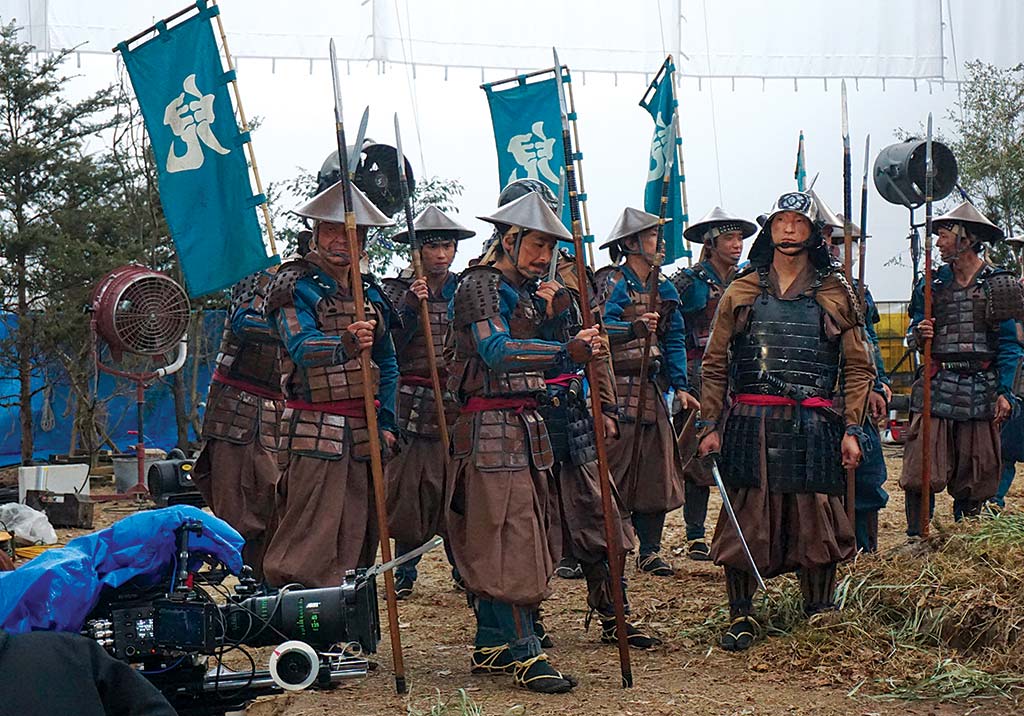
Every Sunday since January, NHK has been broadcasting a drama series about Tokugawa leyasu.
May 2023 number 104 ZOOM JAPAN 5 CULTURE On a chilly February afternoon, I follow a horse inside a huge square building and I am confronted by an army of samurai milling around on a makeshift battlefield. This is Kadokawa Daiei Studio, and today they are wrapping up the four-day shoot of the Battle of Sekigahara (1600), the largest and most important battle in Japanese feudal history which ended the Sengoku (warring states) period and led to the establishment of the Tokugawa shogunate (hereditary military dictatorship).
The scenario for the battle is not ready yet, but they are filming these action scenes in advance. Most of the studio floor is covered in dirt and shrubs. There are dozens of men on the battlefield. About ten of them are professional stuntmen. The others are “high-quality” extras – people with athletic skills who know what to do on the set. Between takes, action coordinator Morokaji Yuta gives them instructions. The soldiers rehearse their moves, punching, kicking and slicing each other in slow motion before the assistant director, megaphone in hand, positions everyone. He shouts “Action!” and everything happens in a few seconds – a blur of charges, shouts and flying bodies.
These scenes are part of Dosuru Ieyasu? [What Will You Do, Ieyasu?] – this year’s Taiga drama. A Taiga drama is a historical drama TV series made every year by NHK, the country’s public broadcaster. It airs every Sunday at 20:00 for a whole year and is easily Japanese television’s grandest and most expensive production. To give an idea of the amount of work required to make this year’s series, some 150 people are involved in various ways, mainly taking care of the technical side of the production. Shooting alone takes 15 months while the entire project, from start to finish, takes more than two years.
This is the 62nd Taiga drama NHK has produced so far. Nearly all the stories portrayed in Taiga dramas are based on actual historical facts. In a few cases, some of the characters are fictional, but almost all dramas centre on historical figures. Dosuru Ieyasu?, for example, is about the life of Tokugawa Ieyasu, the feudal lord who, at the beginning of the 17th century, united Japan and ushered in 250 years of peace. “About 60% of all Taiga dramas are about the Sengoku period,” explains this year’s director, Kato Taku. “After all, this is one of the most interesting and exciting periods in Japanese history. It features many battles and arguably the three most famous historical figures: Oda Nobunaga, Toyotomi Hideyoshi and Tokugawa Ieyasu. Not only are they known to every Japanese person, but they all lived at the same time and had a complex relationship, fighting or forming alliances with each other, depending on the circumstances. It makes perfect TV drama material. That is why we have covered this historical period over and over again.”
Though Ieyasu is one of the most important figures in Japanese history, he usually lags behind both Nobunaga and Hideyoshi in popularity. He is often described as a rather dull, colourless person and an opportunist who exploited the situation to become Japan’s de facto ruler. “In reality, Ieyasu’s life was full of ups and downs,” Kato points out. “He suffered a lot, but he bounced back and overcame all kinds of hardships to become the most powerful man in the country. Most people know what kind of people Nobunaga and Hideyoshi were because they have been covered from every possible angle. But in recent years, more documents and new facts have been unearthed by historians shining new light on Ieyasu’s personality. It turns out that the story that has been handed down until now is not really true. This is the first time in 40 years that NHK has devoted the Taiga drama to Ieyasu, and we want to create an updated image which incorporates a new historical interpretation.”
So, what kind of person was Ieyasu? “I am from Osaka,” Kato says, “and everyone in the Kansai region likes Toyotomi Hideyoshi and hates Tokugawa Ieyasu because he destroyed Hideyoshi’s family. Until now, I thought of Ieyasu as a tough but sly and insidious character, someone who resorted to a whole range of tricks and tactics to achieve his goal. However, I have discovered a new, more human side to him. I also found out that the story I knew about him was all wrong. For example, it is true that when he was little he was taken hostage by rival clans and lived for many years away from his family. However, new findings suggest he was neither overly bitter about that nor used his suffering as a springboard to become more powerful. Rather, Ieyasu had felt quite comfortable living with the Imagawa clan. After all, they treated him well and he had a chance to be exposed to a highly cultured environment.”
Indeed, many court nobles and intellectuals from Kyoto came to live with the Imagawa clan in that period and held banquets, waka (classical Japanese poetry) gatherings and tea ceremonies with their hosts. “It was a very rich feudal domain,” Kato says, “and it seems that Ieyasu liked it very much. It was there that his character and his spiritual foundations were formed. On the contrary, when he finally went back home to Mikawa, he found a place that was not as well-educated.”

One thing that drew the producers to Ieyasu’s life is that he lived in a dangerous period in which the future was anything but predictable. This allows his story to resonate with people now. “We live in economically troubled times and are just coming out of the Covid-19 pandemic,” Kato says. “For the last three years, many people have felt anxious and angry and isolated, and now more than ever we understand that if you do not remain strong and fight through with your friends, you will not be able to overcome difficulties. In other words, we now realise that surviving these times is not so much about demonstrating strength and leadership as protecting what is important to us. It is all about the kindness inherent in human beings, thinking of our friends and families. This is what makes Ieyasu a very contemporary figure. His actions were guided by those feelings, and his victories were the result of building long-lasting relationships based on trust.”
The man who is in charge of telling Ieyasu’s story is Kosawa Ryota, a very popular screenwriter who has written many successful movies and dramas. “Every year we are confronted with the same dilemma: what are we going to do next?” Kato says. “This time, however, Kosawa wanted to do a drama about Ieyasu and we both agreed with his idea and trusted his writing ability. Abroad, I think such a huge project – writing almost fifty 45-minute episodes – would be tackled by a writers’ room, but in Japan it is normal for a single screenwriter to write the whole script. Anyway, Kosawa wanted to make a historical drama that was more fun. He wanted to depict the Sengoku period in a new way, making it an entertaining series that anyone could watch, and I think the results are proving him right. This is a story that can be enjoyed globally, not only in Japan.”
Kato says that while working with Kosawa, he got to appreciate his professionalism and thoroughness. “Kosawa may be thought of as someone who just has fun writing stories,” he says, “but in reality, he does a lot of research. He has his own ideas, but is very careful about how he builds them into a well-crafted plot. All the characters are described in full detail, so when you read the script, you can imagine how they look and what they think.”
One of the things on which Kosawa insisted was that he wanted to give Ieyasu’s part to Matsumoto Jun. “Matsumoto is quite famous abroad, mainly as a member of the idol group Arashi,” Kato says. “However, even as an actor, he is very active in a wide range of genres. He certainly has a very appealing personality, but he also has a strong sense of leadership. He is a hard worker and the kind of person who can lead a team. In this respect, he is very close to Ieyasu’s character, especially the kind of personality we want to depict this time.
“Ieyasu is no hero in the traditional sense. He is not particularly strong, but he is an excellent team player who will cheer people up when they are losing and everybody is down. He also has the ability to harness the power of those around him. Having grown up in captivity, he was aware of his weakness from a young age and knew that he could not achieve anything by himself. Therefore, he made use of the individuality and special skills of his retainers to build a strong team. In that sense, he was a special person, and Matsumoto possesses the same unique energy. He even displays his leadership qualities on the set with the staff during the shoot. Everyone wants to do something for him. He has that kind of charm.”
During the shoot at the Kadokawa Daiei Studio, the entire back wall is covered with a huge screen and LED panel showing a computer generated landscape of the battlefield populated with thousands of soldiers. The same background appears on the camera screen and adapts to its movements. According to Kato, mastering these techniques has been the biggest challenge this time around. “There are about 4,000 digital extras up there,” he says. “If done well, the background harmonises with the scene shot in the foreground and we can achieve the same splendid imagery portrayed on the ancient picture scrolls from the 17th century. This has never been done before. In the past, if you wanted to have movements of vast crowds of troops and people, you had to do the same as Kurosawa Akira and use an amazing number of extras.
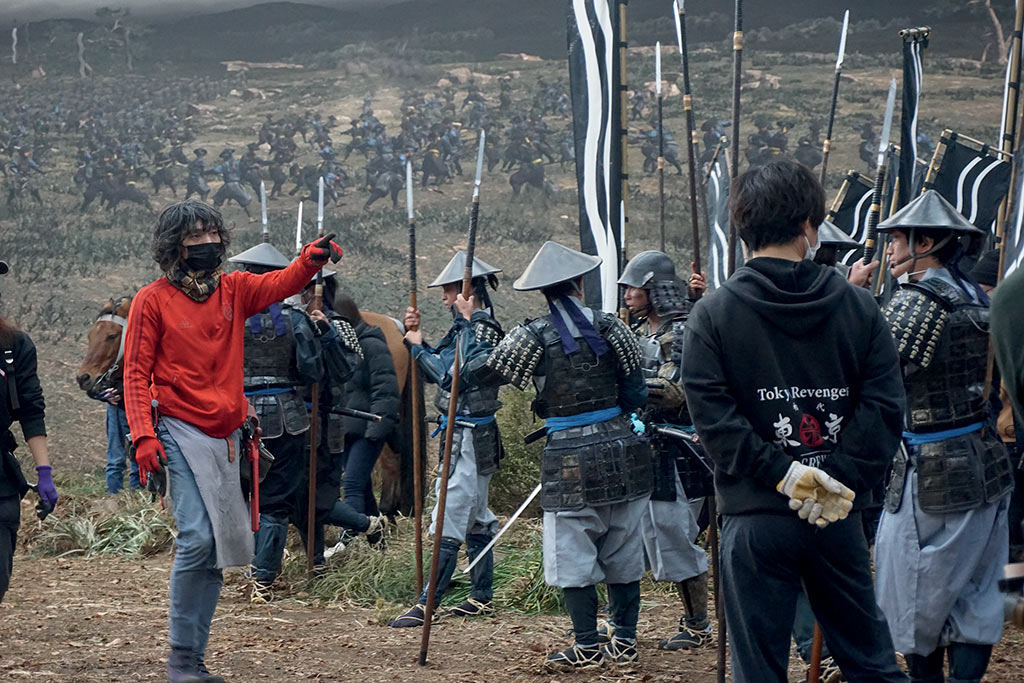
“For us, recreating those gorgeous picture scrolls and folding screens is an unprecedented challenge. If you try to shoot that live, you have to take all the cast and crew to the location, which has become doubly hard recently because of the pandemic. Then there are all sorts of factors you can not control such as unpredictable and extreme weather conditions. There are no convenience stores nearby and everybody gets covered in mud. In this sense, the most important purpose of virtual production is to use new technology to create a different way of producing a Taiga drama, with the added advantage of being able to do it in the safety and comfort of the studio.”
Kato confesses that fine-tuning the technical side of this production was anything but easy. “The first time we tried it was last January, six months before the shoot was due to start,” he says, “but the results were very disappointing. The CG effects, for example, would not move and we had lots of issues. It was not good at all, and there was a point when I feared it was not going to work. Luckily, everything clicked into place in the end and it really shows in the scenes with the electronic flags flying and thousands of people running around the vast plains.
“Battles aside, another great thing about the Sengoku period is the Japanese art and architecture of the magnificent Azuchi-Momoyama culture such as gold folding screens. In the second half of the story, which features fewer battle scenes, we want to present the luxurious interiors of the samurai mansions on a grand scale, and this new technology will be essential to show the richness of the feudal castles in a way that has never been done before. I am very excited about it.”
This is the fourth time Kato has been involved in a Taiga drama production, and the second one as a director. “My very first experience was when I was 26 and worked as an assistant,” he says. “Ten years ago, we did a story about Yamamoto Yae, a female warrior and later educator who helped defend the Aizu Domain during the Boshin War at the end of the Edo period. It was a compelling story about someone who was not well known. Before that, in 2011, I did a special Taiga drama about the Russo-Japanese War called Saka no Ue no Kumo (Clouds Above the Hill). That event was a sort of prelude to the two world wars because machine guns and other modern weapons were used in actual warfare for the first time. So the underlying theme was the cruel and bloody side of war.
“This time, however, we want to highlight the entertainment factor. We want people to feel excited and have fun. Of course, war is always a tragedy no matter what, but we are showcasing the gorgeous costumes of the samurai like the ones depicted in the old scrolls. There is a lot of action, ninjas and plenty of twists and turns. We are having fun shooting this drama and hopefully, the audience will feel and share in the fun. Then, of course, it will be nice if the audience learns something new about this historical period. In the end, I want to do something that people of all ages will enjoy watching on TV, just like in the past.”
Gianni Simone

